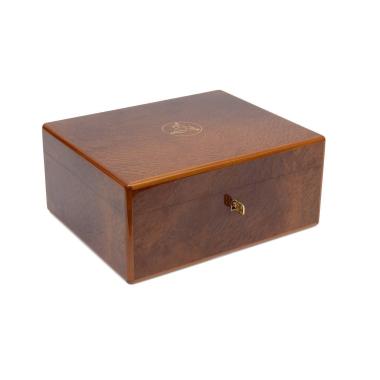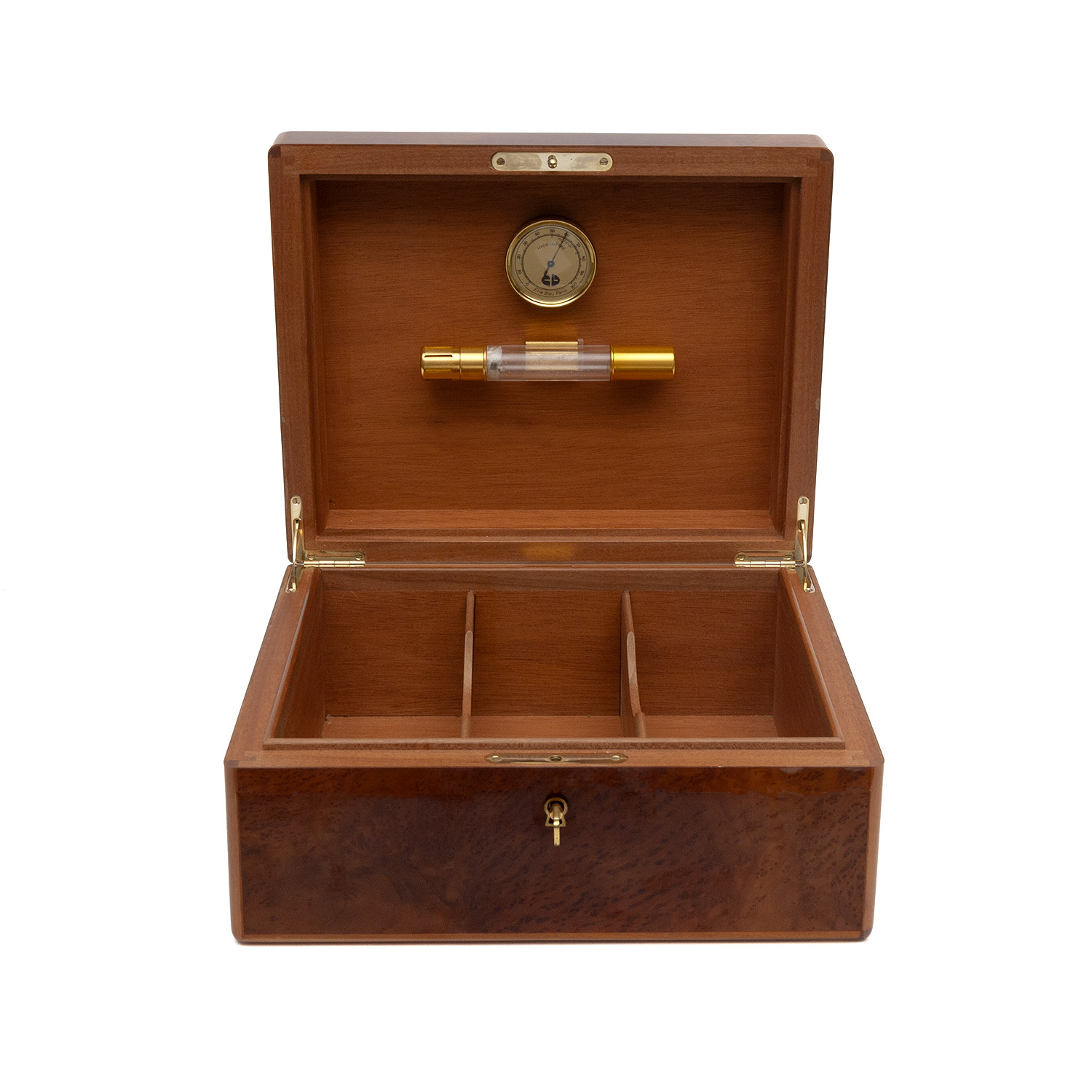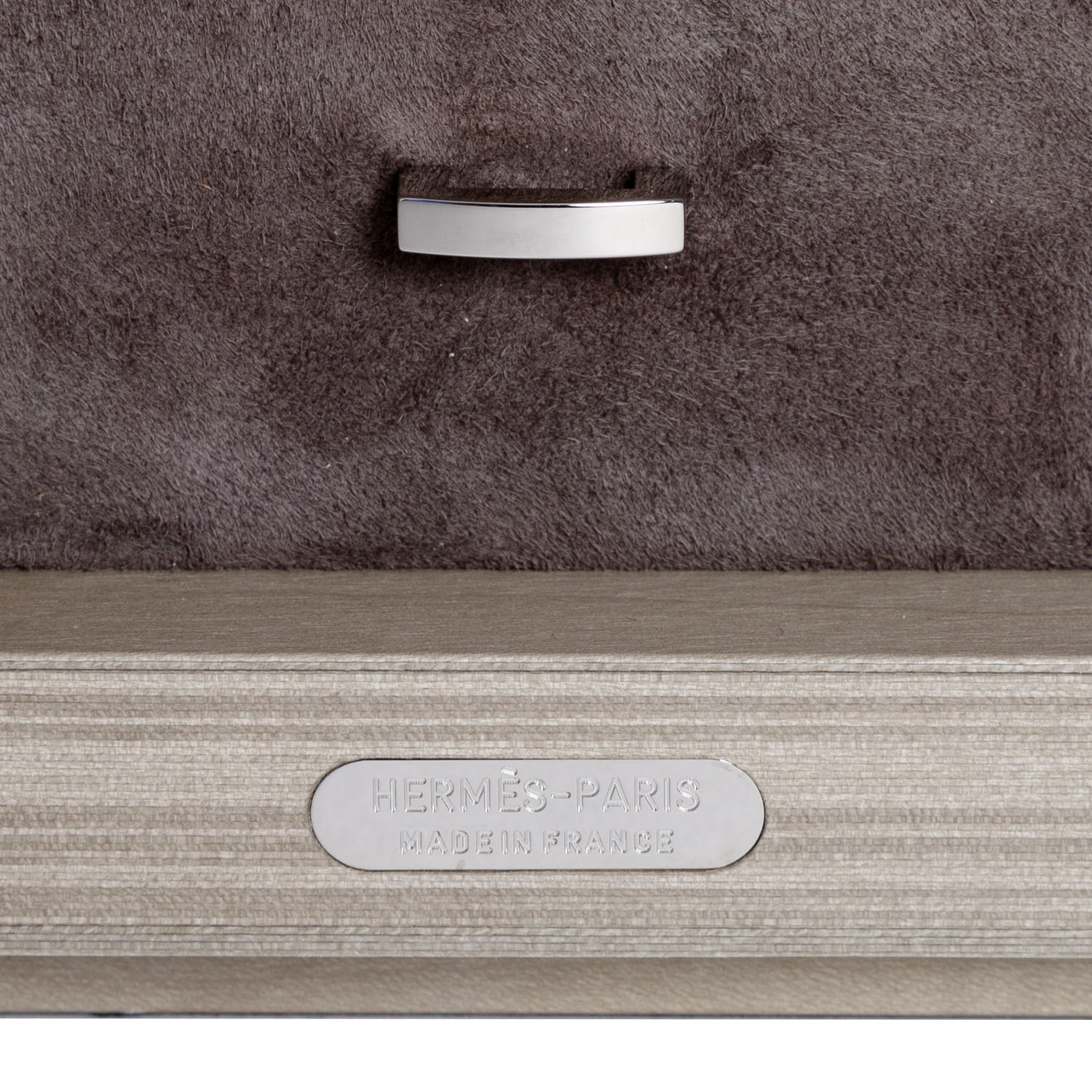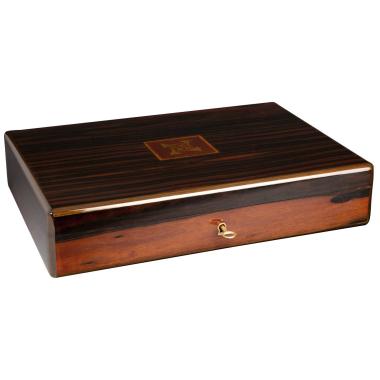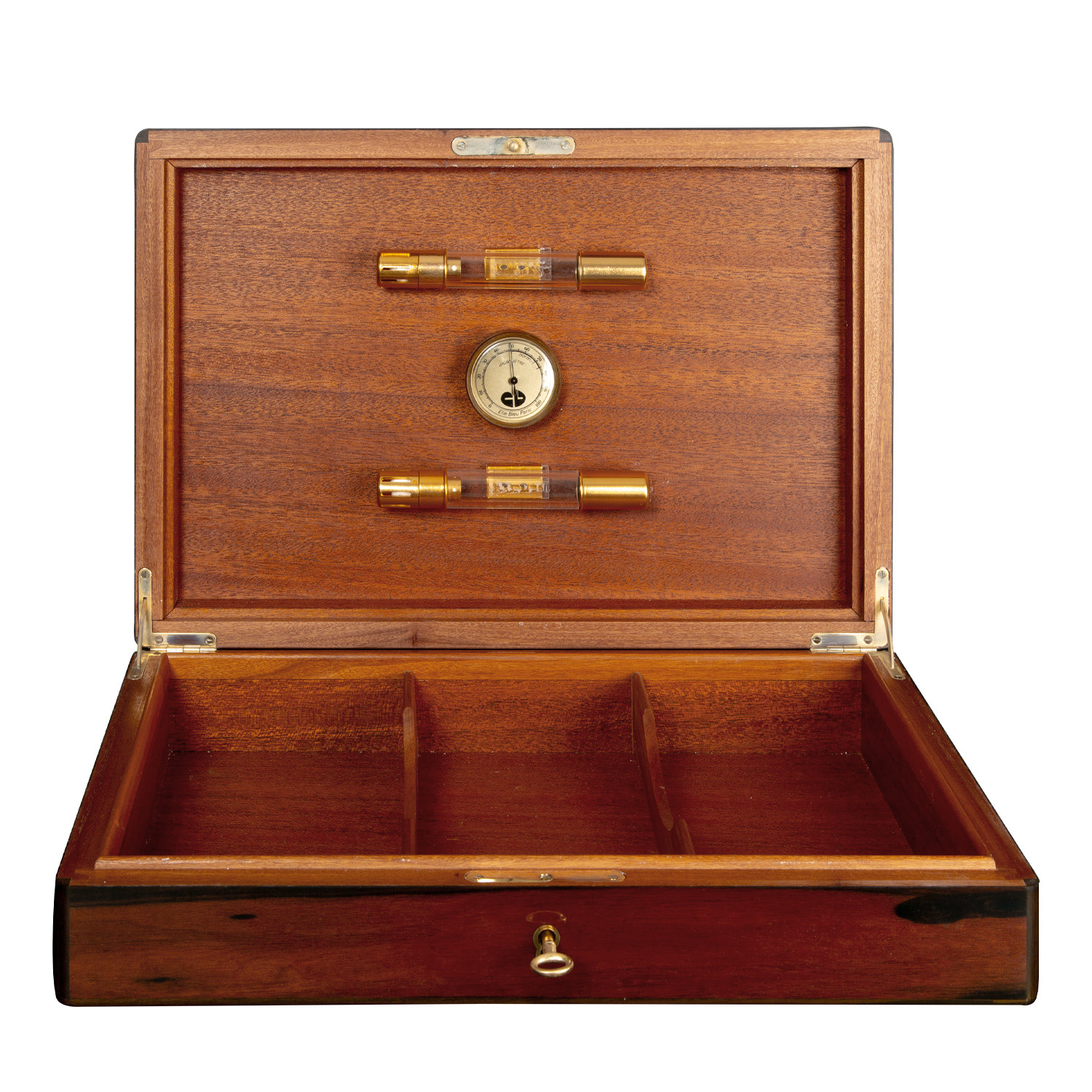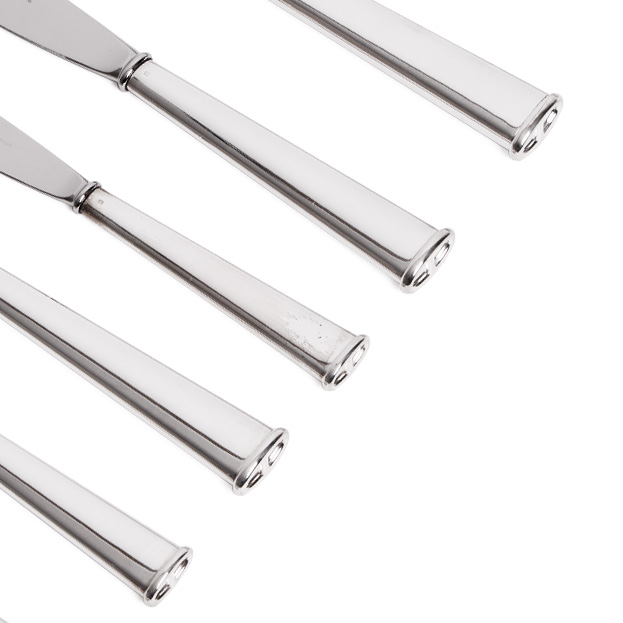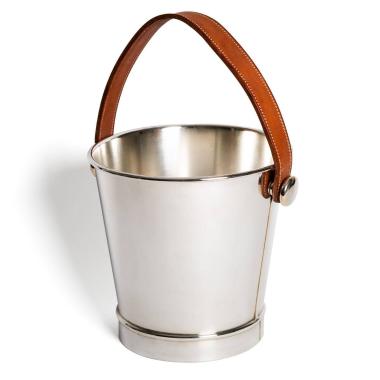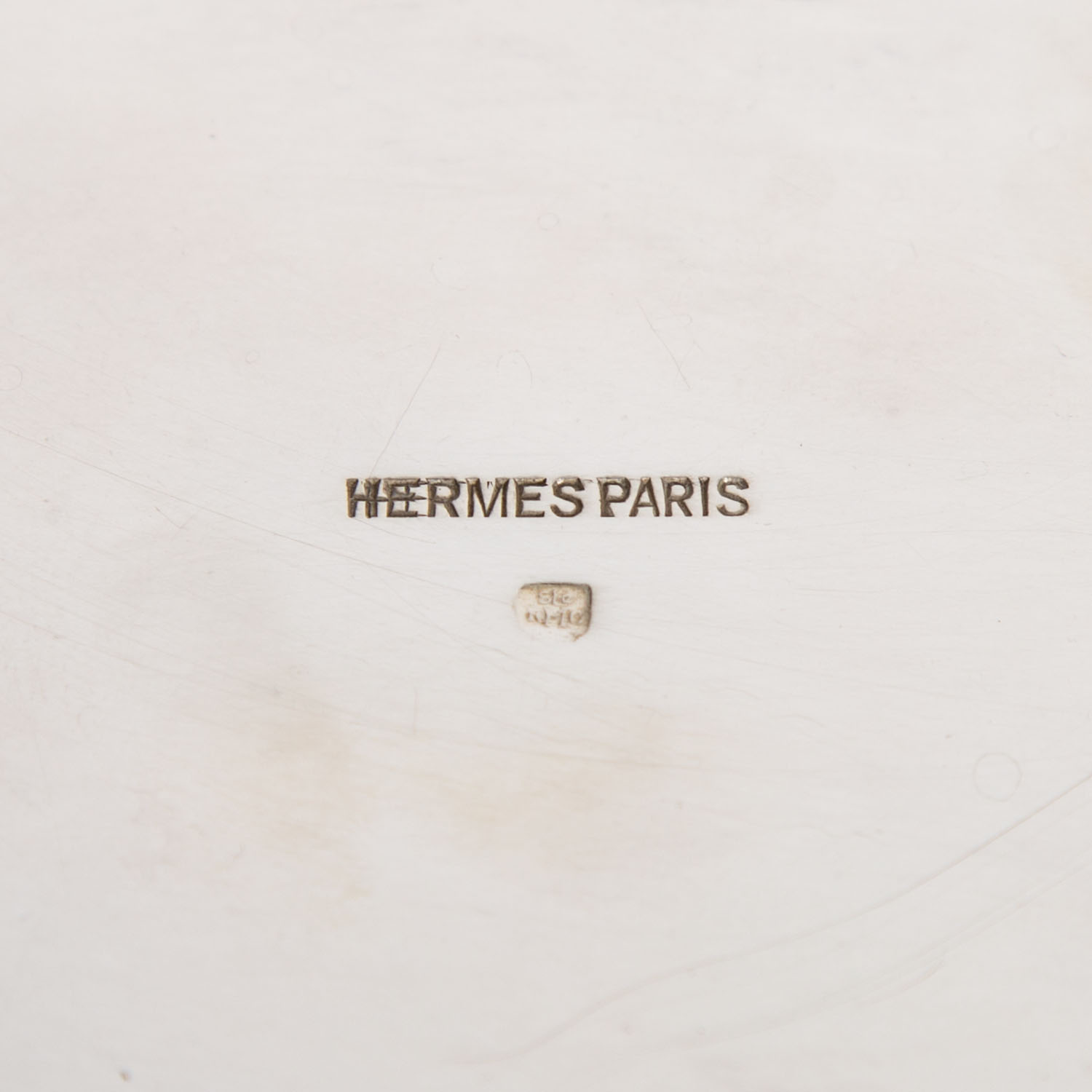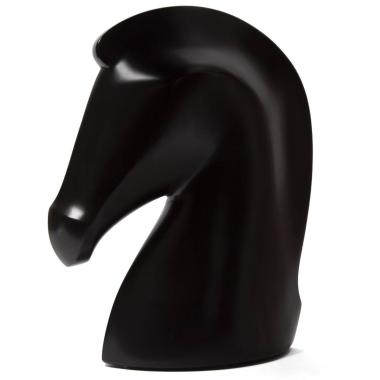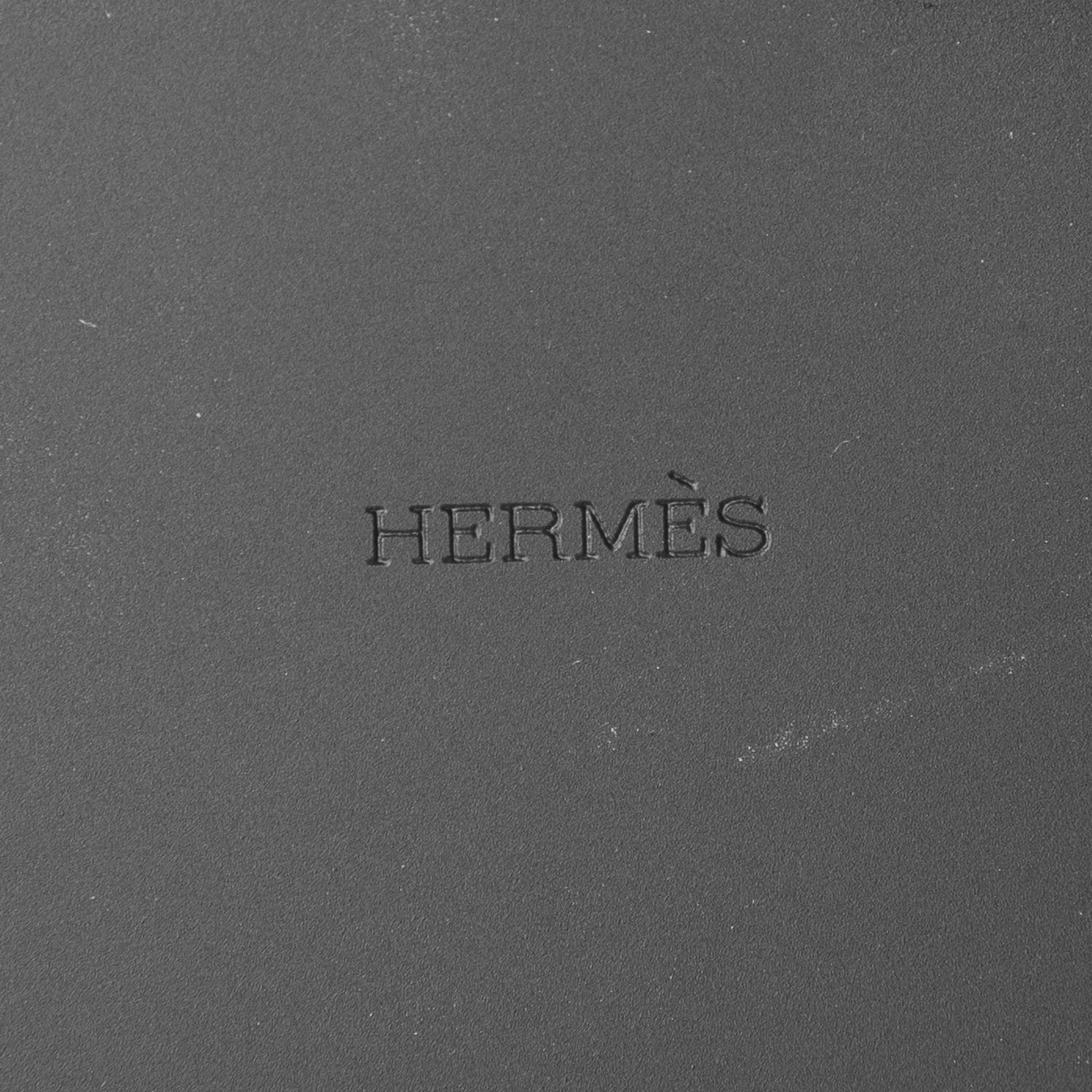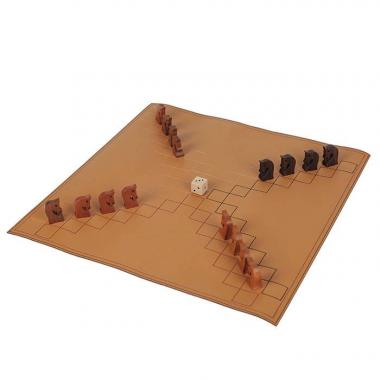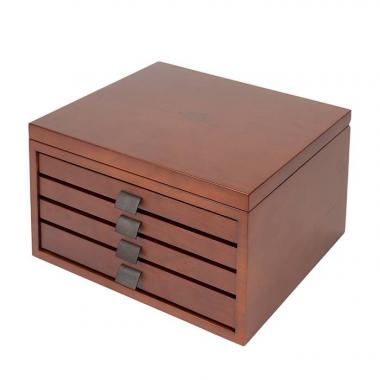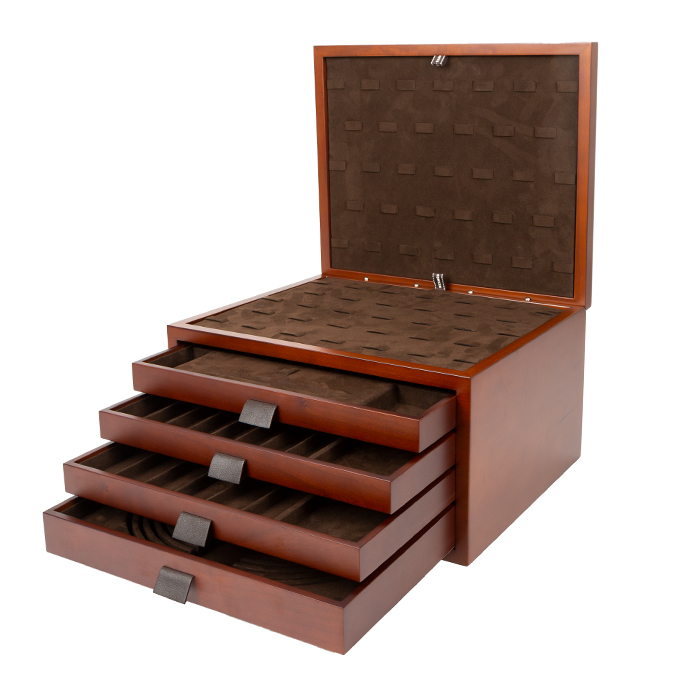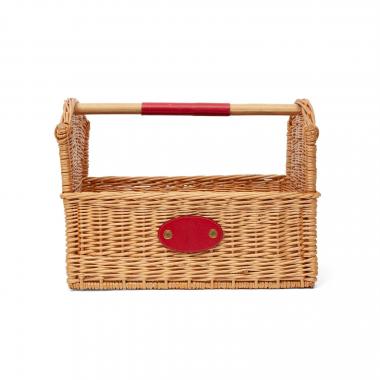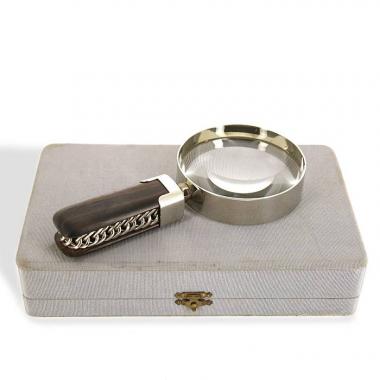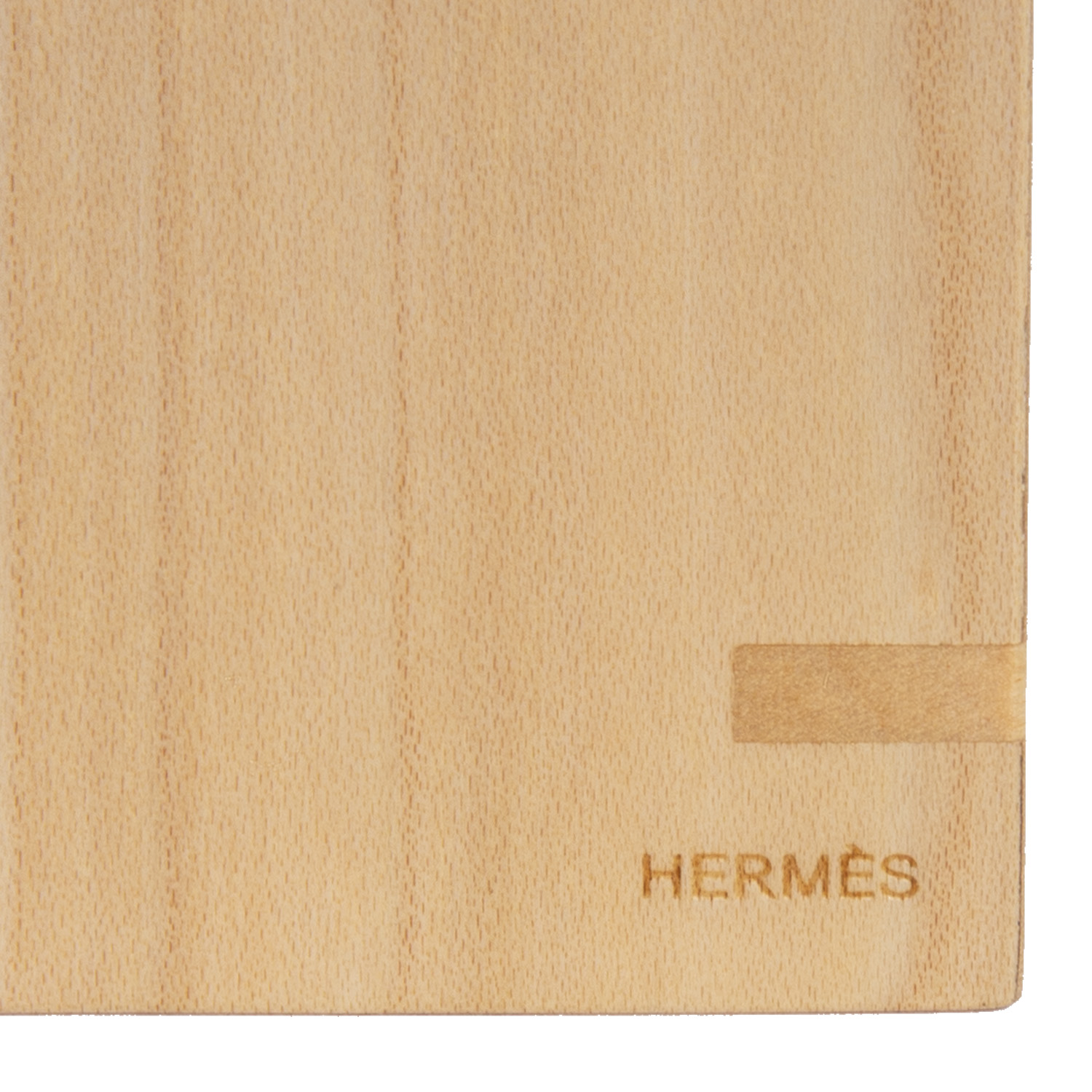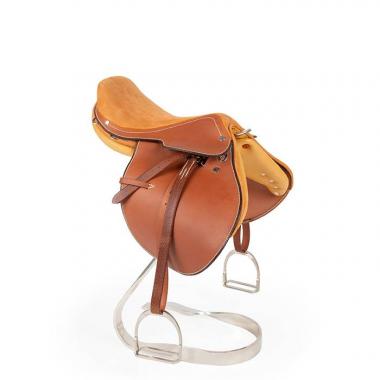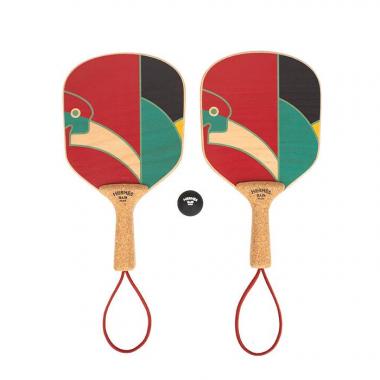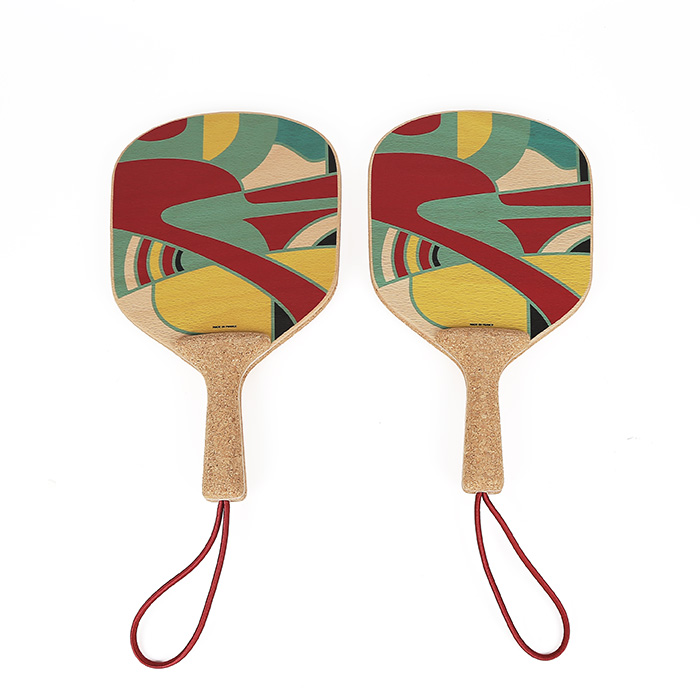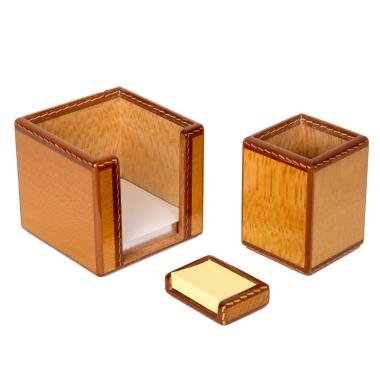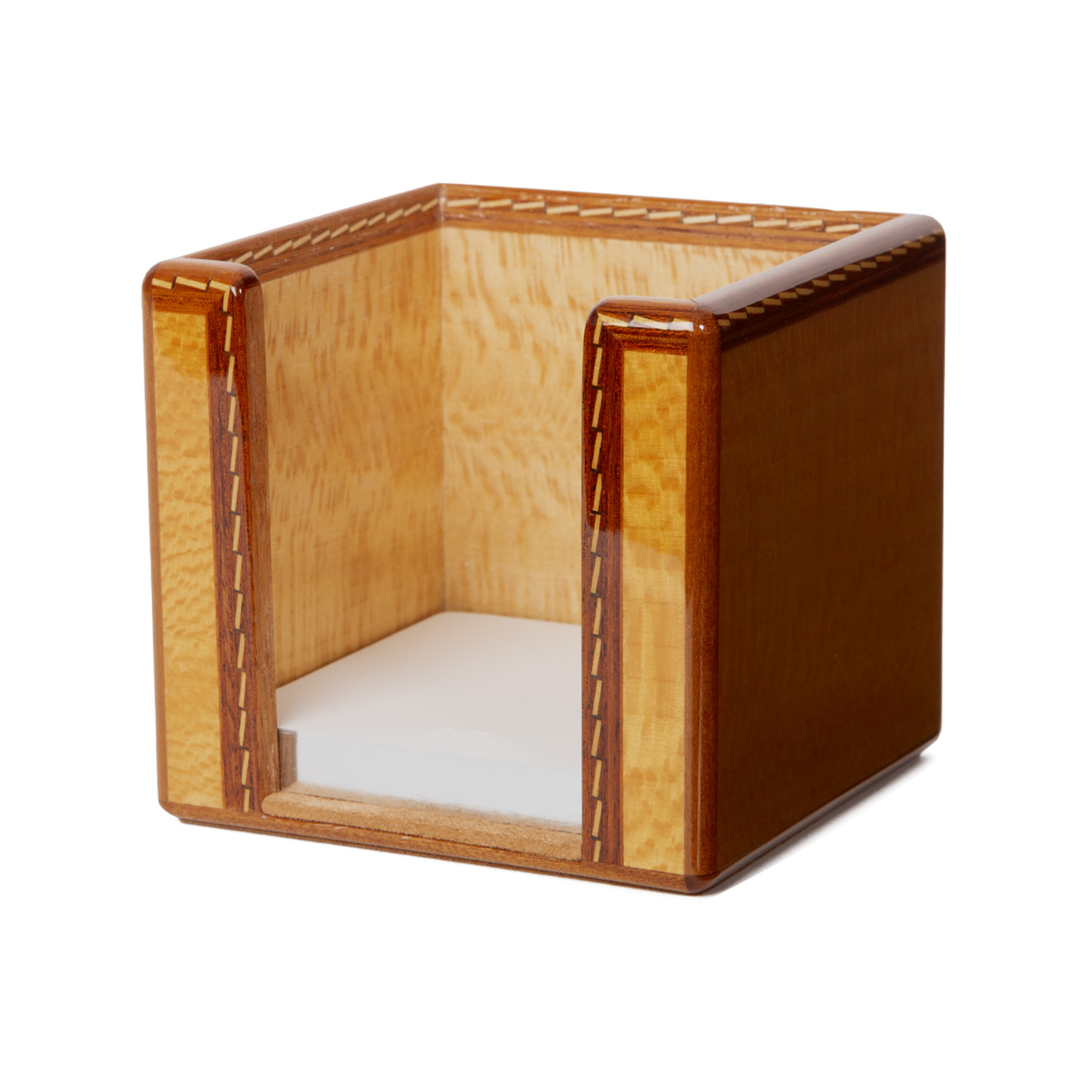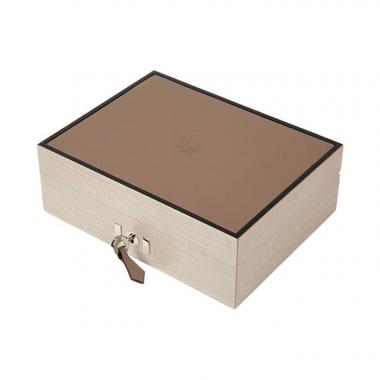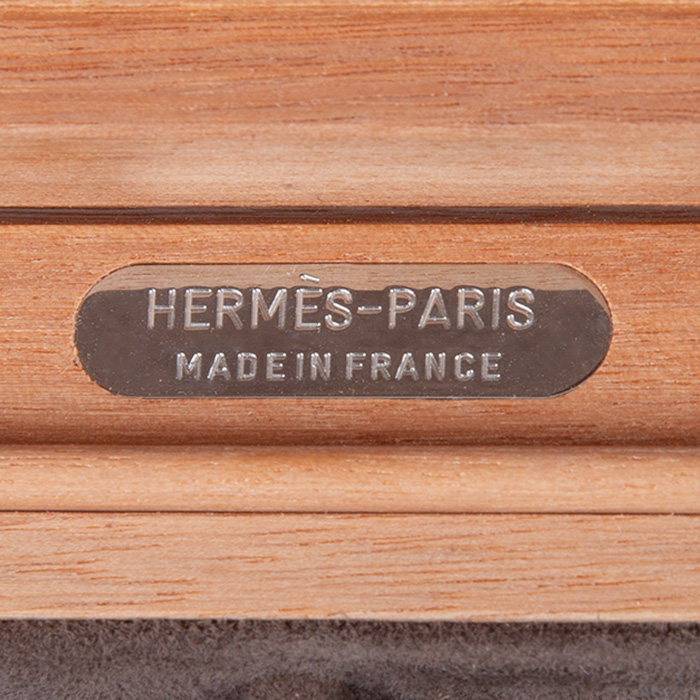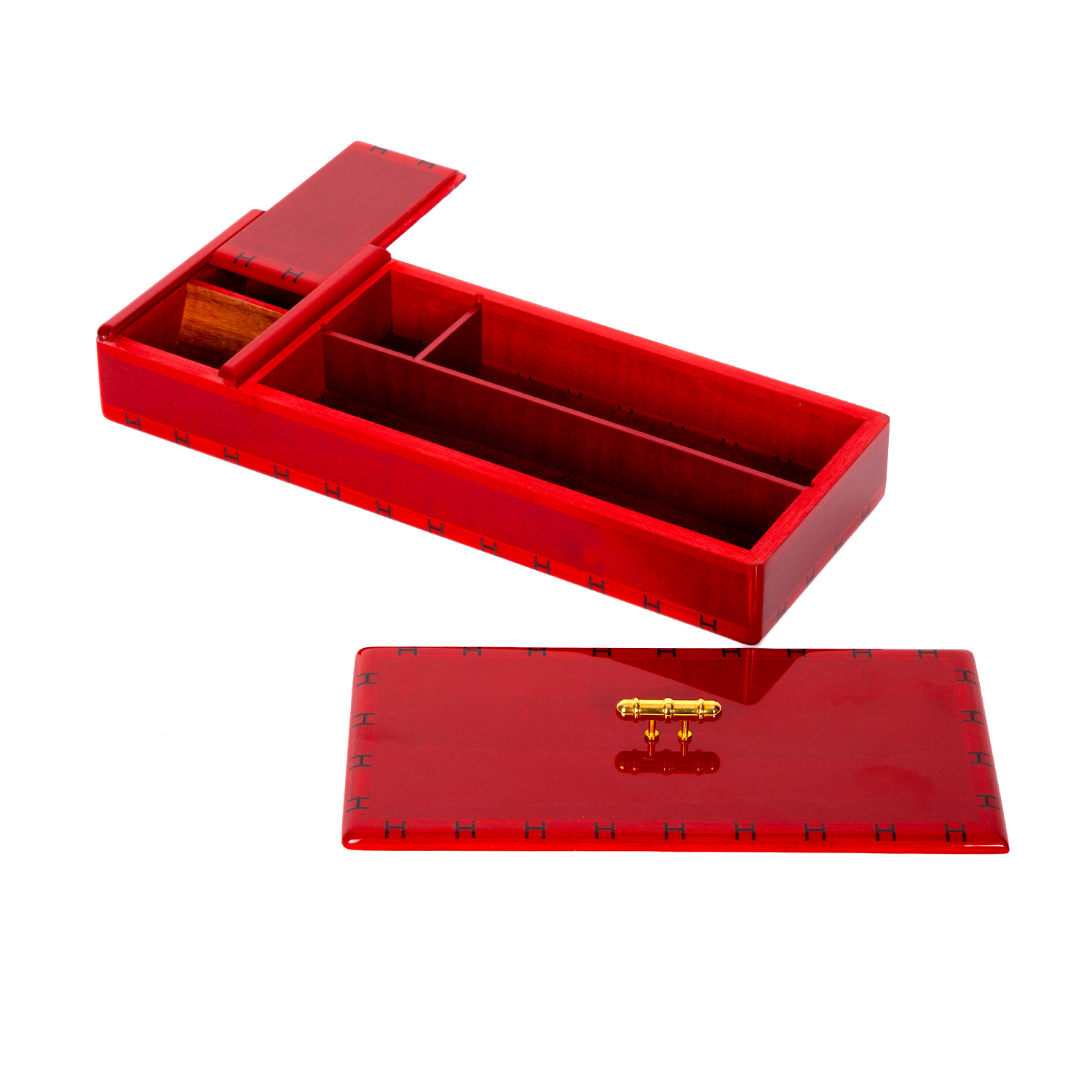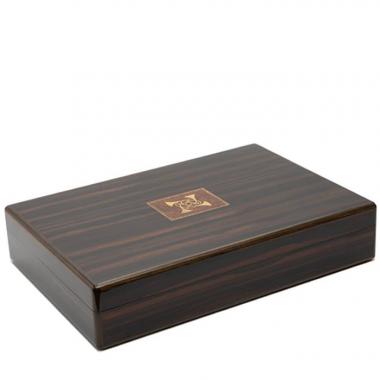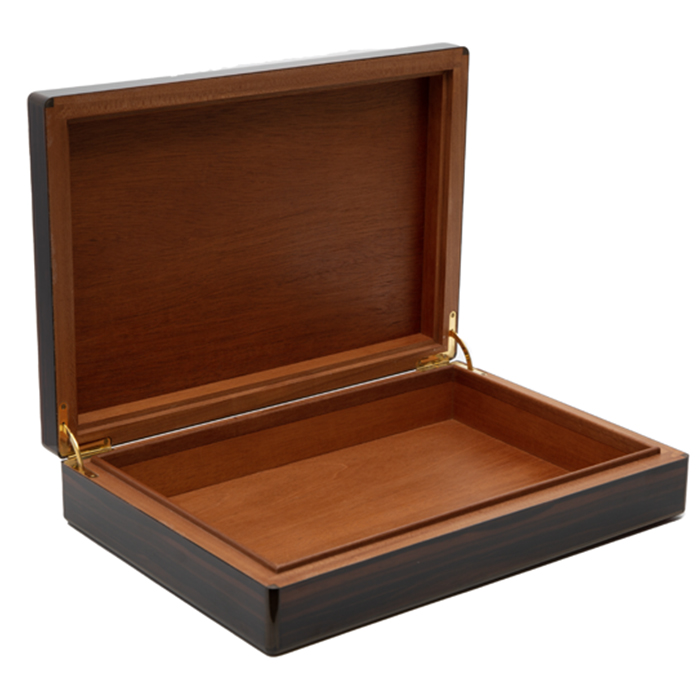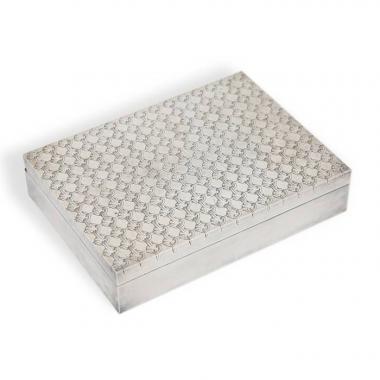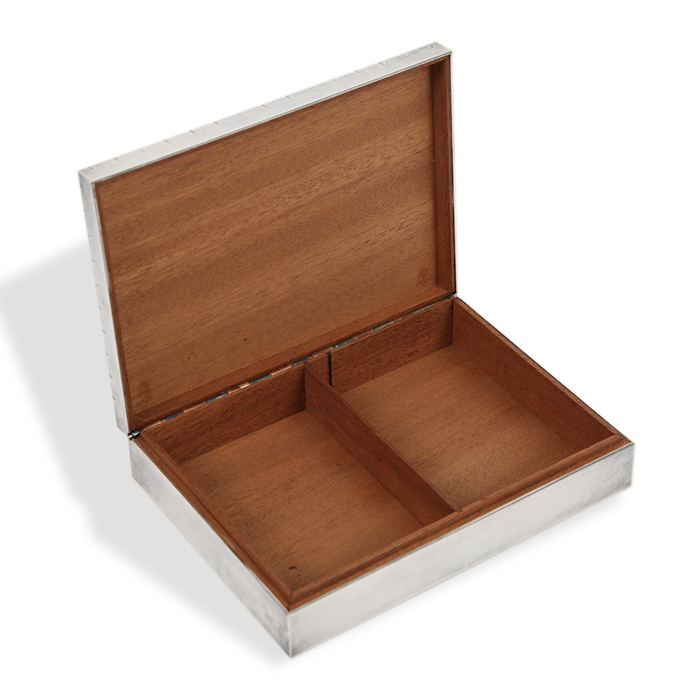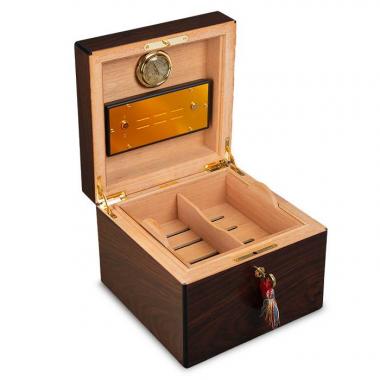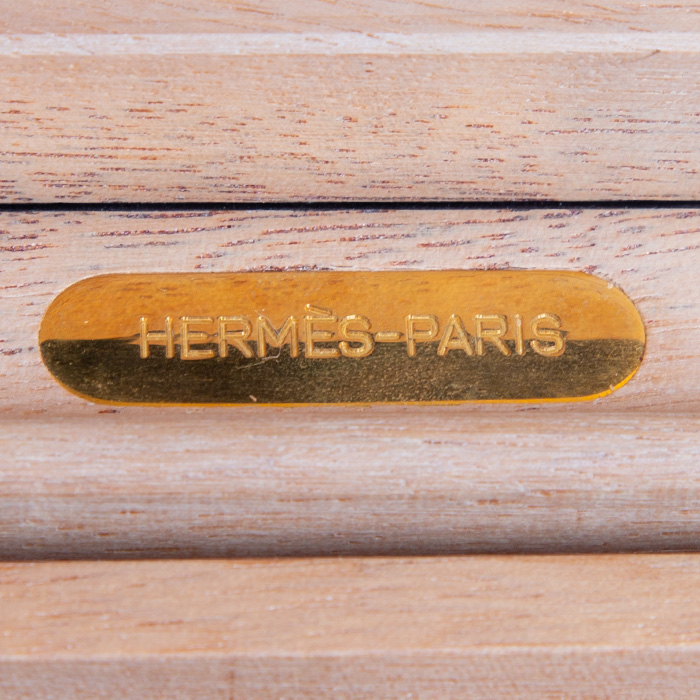Collectables Hermès
-
Hermès, Cigar box - 2000s
3,250 €
-
Hermès, Watch winder for four watches - from 2020's
7,750 €
-
Hermès, Cigar box - 1980's
3,250 €
-
Set of cutlery, 'Comète' model
6,850 €
-
'Sparte' champagne bucket - 1980/1990
3,850 €
-
Hermès, 'Samarcande' sculpture - circa 2020
2,250 €
-
Hermès, Ice bucket "Chaîne d'ancre", in in silver plated metal by Ercuis, signed, beginning of the 1980's
This item is no longer available
-
Hermès, set of Ludo game in leather and wood, signed, from the 2000's
This item is no longer available
-
Hermès, Large jewelry box, in rosewood, leather and chocolate suede leather, signed, from the 2020's
This item is no longer available
-
Hermès, Sofa throw Avalon - from the 2020's
This item is no longer available
-
Hermès, Picnic basket - circa 1980
This item is no longer available
-
Hermès, rare magnifying glass, in silvered metal by Ravinet Denfert and rosewood, with its original box, signed, from the 1980's
This item is no longer available
-
Hermès, Backgammon tray - circa 1980
This item is no longer available
-
Hermès, Travel chess game "Samarcande" - from the 2020's
This item is no longer available
-
Hermès, Exceptional mini Selle "Cavale", in stitched swift leather and doblis leather, with its base, signed and numbered, of 2017
This item is no longer available
-
Hermès, beach racket set, in beech wood and cork, signed, from the 2020's
This item is no longer available
-
Hermès, Hermy Pixel Plush - from 2020's
This item is no longer available
-
Hermès, Desktop set - from 1980s
This item is no longer available
-
Hermès, Jewelry box, in wood, leather and suede leather, signed, of 2017
This item is no longer available
-
Hermès, Writing box - from 1980s
This item is no longer available
-
Hermès, large mail box, in rosewood and wooden marquetry and brass, signed, from the 1980's
This item is no longer available
-
Hermès, card box in guilloched silvered metal by Ravinet Denfert, signed and stamped, from the 1980’s
This item is no longer available
-
Hermès, Rocking horse "Hermy", in beech, cotton, wool and acrylic fur, signed, from 2020's
This item is no longer available
-
Hermès, Cigars humidor, in wood, golden trim, signed, from the 2000's
This item is no longer available
Collectables Hermès
Hermès was founded in 1837 by Thierry Hermès. The firm initially specialised in horse bridles and saddlery for wholesalers.
In 1878, Thierry’s son Emile-Charles was forced to relocate Hermès, but the firm’s new location in an upmarket district of Paris – at 24 Rue du Faubourg Saint-Honoré – gave him the idea of targeting a private clientele. This was a success and, in 1890, his sons Adolphe and Emile-Maurice took over management of the company. The newly named Hermès Frères supplied the greatest stables in the world as well as European courts (including the court of Tsar Nicholas II).
However, with the invention of the automobile casting a potential shadow over their flourishing business, the two Hermès brothers decided to diversify their range and launch the first « saddle-stitched” leather goods, transferring their expertise to a new activity.
In 1921, Emile-Maurice bought his brother’s share to become the sole director of Hermès.
During the 1920s, Emile-Maurice Hermès continued to diversify the firm’s product range to encompass gloves, watches, jewellery, interior decoration and, from 1925, even men’s and women’s clothing. These first items of clothing were leather golf jackets which were a great success due to their use of zips, a revolutionary fastener at the time, since Emile-Maurice Hermès has signed an exclusivity agreement for this new design with its inventor.
During the same period, he also met Ettore Bugatti, an automobile manufacturer who had just designed a new model of sports car – the Torpedo. Bugatti commissioned him to produce a leather bag suitable for keeping in the car door and the resulting bag was logically christened the Torpedo.
In 1926, Lola Prusac was hired as a fashion designer to develop new ranges of Hermès sportswear (ski-wear, swimwear, etc.), haute-couture, a line of handbags and luggage, as well as scarves.
Many of the brand’s great classics appeared during the 1930s. These included Hermès square scarves, the first of which, Jeu des Omnibus et Dames Blanches (Omnibus and White Ladies), was created in 1937 by Robert Dumas. These famous silk squares, originally only available in 90cm x 90cm format, take two years to make and are of a quality still unequalled anywhere in the world. The Twillaine (1938), another classic Hermès scarf combining wool and a square of silk, followed soon after.
In terms of leather goods, the Hermès bag worn by Grace Kelly in a 1956 photo became the brand’s number one classic. The famous actress, who had become the Princess of Monaco in the same year, made the bag – based on Haut à Courroies travel bags, a Hermès model originally used by horsemen – such a success that in 1977 the brand decided to rename them Kelly bags.
On Emile-Maurice’s death in 1951, his sons-in-law Robert Dumas and Jean Guerrand took over management of the firm, increasing the number of shops and launching Hermès fragrances: Calèche (1961), Equipage (1970), Amazone (1974), etc.
From 1967, the Hermès line of prêt-à-porter was developed by a series of fashion designers: Jacques Delahaye, Catherine de Karolyi, Monsieur LeVaillant, Nicole de Vésian assisted by Christian Lacroix, Eric Bergère (1980), Claude Brouet (1988), Martin Margiela, Jean-Paul Gaultier and finally Véronique Nichanian (who has run menswear since 1990) and Christophe Lemaire (who has run womenswear since 2010).
During the 1970s, the Hermès group – taken over in 1978 by Jean-Louis Dumas, a talented designer and businessman descended from the Hermès family – became the international flagship for French luxury. It owned the bootmaker John Lobb France (1976), Perrin & Fils fabrics (39% stake in 1989), the milliner Motsch (1992), Puiforcat table arts (1993) and Jean-Paul Gaultier fashion house (35% stake in 1999), etc.
In 1982, Hermès decided to update its Torpedo handbag for modern tastes by adding pockets, a lining, padlock and keys, and renaming it the Bugatti, in tribute to Ettore Bugatti. However, the Bugatti company objected and a series of legal proceedings took place before the emblematic Hermès Bugatti bag was eventually renamed Bolide in 1994.
In 1984, the brand released another emblematic handbag. This was the Birkin, specially designed for actress and singer Jane Birkin, who had recently become a mother.
Meeting Hermès director Jean-Louis Dumas by chance on a plane, Birkin complained that her handbag had insufficient storage space and pockets. Jean-Louis Dumas immediately decided to create a model of bag which would meet the young woman’s needs and named it after her.
In 2006, Patrick Thomas took over from Jean-Louis Dumas, becoming the first manager of the group from outside the Hermès family.
In 2008, the Hermès Corporate Foundation, directed by Pierre Alexis Dumas, opened in Paris’s 8th arrondissement.
This public interest organisation is responsible for managing all the Hermès group’s corporate patronage and works internationally in four key areas: promoting craftsmanship, supporting creativity (e.g. the Prix Emile Hermès for young designers), access to education and training, as well as preserving biodiversity.
In 2010, a 22.6% stake in the Hermès group was acquired by the LVMH group, although Hermès has now created a holding company called H51, comprising 52 of its main family shareholders, to protect itself against such acquisitions in the future – the group wants to remain in the family.
Today, the Hermès brand embodies the preeminence of French high-end expertise throughout the world, achieving an annual turnover of more than 2.84 billion euros in 2011 and with more than 300 shops.
Hermès is one of the few luxury brands to record such strong growth in 2012 (more than 20% up on 2011), with its strongest product growth coming from Europe, Asia (excluding Japan) and the United States.
14-days return policy
Recently viewed
Explore
Our most sought-after ranges
by brand, collection or category.
Collector Square authentication and Hermès marking guide
Collector Square offers you more than 700 Hermès bags, which, after being carefully selected for their perfect condition and desirability, are appraised and authenticated by our expert Jérôme Lalande. Jérôme Lalande is renowned for his expertise on all Hermès items and fine leather goods, all brands combined. He has been working with Hermès for more than twenty years.
In most cases, Hermès leather bags have a "stamp" from Hermès that allows for precise dating of the bag. This marking consists of a letter used in alphabetical order by the Hermès. From 1971, this letter is associated with a shape : a circle or a square. The additional numbers or letters that may appear next to this marking give additional information about the Hermès workshop.
You will find a guide to these markings below:
| Circle | 1971 A, 1972 B, 1973 C, 1974 D, 1975 E, 1976 F, 1977 G, 1978 H, 1979 I, 1980 J, 1981 K, 1982 L, 1983 M, 1984 N, 1985 O, 1986 P, 1987 Q, 1988 R, 1989 S, 1990 T, 1991 U, 1992 V, 1993 W, 1994 X, 1995 Y, 1996 Z |
| Square | 1997 A, 1998 B, 1999 C, 2000 D, 2001 E, 2002 F, 2003 G, 2004 H, 2005 I, 2006 J, 2007 K, 2008 L, 2009 M, 2010 N, 2011 O*, 2012 P, 2013 Q, 2014 R (late production had no square), 2015 T (no square), 2016 X (no square), 2017 A (no square) , 2018 C (no square), 2019 D (no square), 2020 Y (no square) |
Note that the stamp on some Hermès handbags can sometimes be harder to read, illegible and in some cases the code may even have disappeared.
